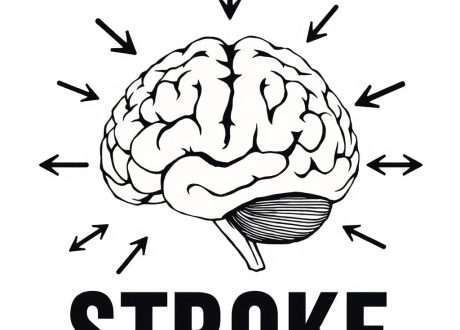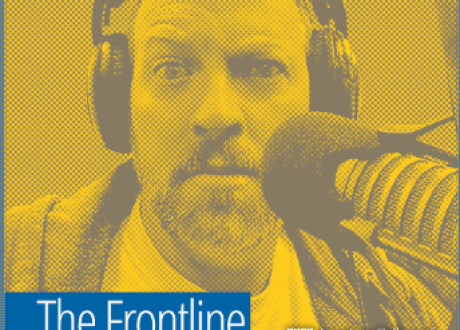Podcast: Play in new window | Download
Reference: Gibbons et al. The sonographic protocol for the emergent evaluation of aortic dissections (SPEED protocol): A multicenter, prospective, observational study. AEM February 2024.
Date: February 28, 2024
Guest Skeptic: Dr. Neil Dasgupta is an emergency medicine physician and ED intensivist from Long Island, NY. He is the Vice Chair of the Emergency Department at Nassau University Medical Center in East Meadow, NY, the safety net hospital for Nassau County.
Case: A 59-year-old man walks into your community emergency department (ED) complaining of chest pain. It is described as a ripping sensation that radiates to his back. His vital signs are all normal and the ECG done at triage does not show an occlusive myocardial infarction. The chest x-ray is unremarkable, and his troponin is not elevated. You suspect an acute aortic dissection (AoD). However, your CT scanner is offline for two hours of scheduled maintenance. He will need to be transferred to the tertiary care center which is 35 minutes away by ground EMS if it is a dissection. Your Spidey senses are tingling, and you don’t want to wait for the CT scanner to be back online to make the diagnosis. Arrangements are made for him to be transferred stat to the tertiary hospital while he is still stable. You wonder if a quick POCUS examination looking for three sonographic findings while waiting for the paramedics could help determine the likelihood of this being an AoD.
Background: We recently covered acute aortic syndrome (AAS) on SGEM#430. AAS has been called the lethal triad and includes aortic dissection (AD), intramural hematoma (IMH), and penetrating aortic ulcer [1]. It is a rare but deadly condition that can present in atypical ways leading to delays in diagnosis and an associated increase in mortality.
This episode is going to focus on acute aortic dissection (AoD) which is classified into two major types according to the Stanford classification system: Type A and Type B. This system is based on the location of the tear and helps guide treatment strategies.
 Type A dissections Involves the ascending aorta and may extend into the descending aorta. It’s more common and more dangerous than Type B, as it can lead to serious complications like rupture into the pericardial space leading to cardiac tamponade, aortic valve insufficiency, or myocardial infarction. Symptoms may include more severe chest pain radiating to the back, loss of consciousness, or symptoms of stroke if the blood supply to the brain is affected. Type A AoDs generally require an emergent trip to the operating room as soon as they are identified to reduce the likelihood of a terrible outcome.
Type A dissections Involves the ascending aorta and may extend into the descending aorta. It’s more common and more dangerous than Type B, as it can lead to serious complications like rupture into the pericardial space leading to cardiac tamponade, aortic valve insufficiency, or myocardial infarction. Symptoms may include more severe chest pain radiating to the back, loss of consciousness, or symptoms of stroke if the blood supply to the brain is affected. Type A AoDs generally require an emergent trip to the operating room as soon as they are identified to reduce the likelihood of a terrible outcome.
Type B dissections occur in the descending aorta only, after it has passed the arteries that supply blood to the arms and head. They are less common than Type A and usually less immediately life-threatening, but still serious and potentially fatal if not treated properly. Symptoms can include sudden onset of pain in the back or abdomen, depending on the exact location and extent of the dissection. The pain is often described as tearing or ripping.
Speed is important in making the diagnosis of an AoD due to the associated increase in mortality with delays [2,3]. We know from last week that clinical decision tools (CDTs) are not ready for prime time. This is consistent with the American College of Emergency Physicians (ACEP) which does not recommend the routine use of clinical decision rules in suspected cases of AoD [4].
CLINICAL QUESTION: WHAT IS THE DIAGNOSTIC ACCURACY OF THREE SONOGRAPHIC FINDINGS FOR ACUTE AORTIC DISSECTION?
Reference: Gibbons et al. The sonographic protocol for the emergent evaluation of aortic dissections (SPEED protocol): A multicenter, prospective, observational study. AEM February 2024.
- Population: A convenience sample of adult patients with clinically suspected Stanford type A or B AoDs before performing a POCUS or CTA from January 2010 to December 2019
- Excluded: Those patients unable to consent, those with a preexisting or traumatic AoD, and individuals who did not receive a POCUS evaluation prior to advanced imaging (CTA, MRA, or TEE).
- Intervention: POCUS performed by PGY1 to 3 EM residents to identify three sonographic findings consistent with acute aortic dissection. This included (1) the presence of either a pericardial effusion or (2) an intimal flap, or (3) an aortic outflow track (AOFT) diameter greater than 35 mm measured from the inner wall to the inner wall within 20 mm of the aortic annulus during end-diastole.
- Comparison: CTA of chest-abdomen-pelvis, MRI/MRA, or cardiology-performed TEE
- Outcome:
- Primary Outcome: Diagnostic accuracy of identifying a Stanford Type A and B AoDs
- Secondary Outcomes: Test characteristics of each of the three individual sonographic findings for diagnosing Stanford type A and B AoDs
- Type of Study: Multicenter, prospective, observational, cohort study of a convenience sample of adult patients.

Dr. Ryan Gibbons
This is the first SGEMHOP of 2024. I’m pleased to introduce Dr. Ryan Gibbons. He is a proud graduate of the Lewis Katz School of Medicine (LKSOM) at Temple University where he completed his Emergency Medicine (EM) residency, serving as chief resident, followed by an Advanced Emergency Medicine Ultrasonography (AEMUS) fellowship at Temple as well. Currently, Dr. Gibbons is an Associate Professor of EM, AEMUS fellowship director, and the Director of Ultrasound in Undergraduate Medical Education (UME).
Authors’ Conclusions: “The SPEED protocol has an overall sensitivity of 93.2% for AoD.”
 Quality Checklist for Observational Study:
Quality Checklist for Observational Study:
- Did the study address a clearly focused issue? Yes
- Did the authors use an appropriate method to answer their question? Unsure
- Was the cohort recruited in an acceptable way? No
- Was the exposure accurately measured to minimize bias? Yes
- Was the outcome accurately measured to minimize bias? Yes
- Have the authors identified all-important confounding factors? No
- Was the follow-up of subjects complete enough? Yes
- How precise are the results? Not very precise with a wide 95% CI
- Do you believe the results? Yes
- Can the results be applied to the local population? Unsure
- Do the results of this study fit with other available evidence? No
- Funding of the Study: Investigators received no funding and declared no conflicts of interest
Results: Over the ten years, 1,314 patients were approached and agreed to be enrolled in the study. The median age was 59 years with 49% being female. There were 21 (1.5%) Stanford type A and 23 (1.8%) Stanford type B dissections diagnosed. Of the 44 (3.3%) cases diagnosed, 41 of them (93.2%) had at least one finding present on POCUS.
KEY RESULT: WHILE THE SENSITIVITY OF POCUS FOR AORTIC DISSECTION WAS HIGH, THE 95% CONFIDENCE INTERVAL AROUND THE POINT ESTIMATE WAS VERY WIDE DUE TO THE LOW NUMBER OF CASES.
- Primary Outcome: Diagnostic accuracy of identifying a Stanford type A and B AoDs

- Secondary Outcomes: Test characteristics of each of the three individual sonographic findings for diagnosing Stanford type A and B AoDs.


Listen to the SGEM podcast to hear Ryan answer our five nerdy questions.
1. Convenience Sample: These were not consecutive patients but rather a convenience sample of patients with suspected AoD. How did patients ultimately make it into the study, and what biases could this have introduced into the sample?
2. Ultrasonographers: These scans were done by PGY1 – PGY3 emergency medicine residents. They received a four-hour introductory course taught by our emergency ultrasound faculty. In addition, each resident completed a three-week emergency ultrasound rotation during their internship. They did not receive any additional formal training before participating in the study except for the standard bedside teaching throughout their residency. Do you think this can be extrapolated to an attending physician in a non-academic, community or rural setting?
3. Lack of Masking: Physicians performing the scan were not masked. They also had access to laboratory results (d-dimer) and plain film imaging. How do you think that could have biased the results?
4. Prevalence Higher: Your prevalence of 3.5% was high compared to previously published data [5.6]. This too suggests some selection bias. What other biases could this suggest?
5. Prevalence Sill Low: The 3.5% is still a small number even if it is larger than other published data. This small number of cases results in a wide 95% confidence interval around the point estimate for the diagnostic accuracy metrics. What impact do you think this may have had on your results?
Comment on Authors’ Conclusion Compared to SGEM Conclusion: We agree with the authors’ conclusions but would have added that there was a wide confidence interval around the reported 93.2% sensitivity.
SGEM BOTTOM LINE: AORTIC DISSECTIONS ARE RARE DIAGNOSES, DEADLY DIAGNOSES AND HARD TO DIAGNOSE EVEN WITH POCUS.
Case Resolution: The vascular surgeon says to get on the road and don’t wait for the CT scanner to be up and running. Speed is of the essence, and they will be standing by on arrival to assess the patient. The patient arrives alive, and you transfer care to the vascular team. When you get back to the community hospital you find out the CTA shows a Stanford Type B aortic dissection, and the vascular team is discussing the next steps with the patient and their family.

Dr. Neil Dasgupta
Clinical Application: This is an interesting study but would need to be replicated in other clinical settings to see if it could be a fast and accurate way to diagnose AoD.
What Do I Tell the Patient? It looks like the large blood vessel coming off your heart has a tear. This is a serious and potentially deadly condition. We need to get you to the city hospital ASAP. The ambulance is on the way and the vascular surgeons are waiting for you to arrive.
Keener Kontest: Last week’s winner was David Bowden. He knew St. John’s Wort has some evidence for efficacy in the treatment of mild to moderate depression
 Listen to the podcast to hear the question for this episode. If you think you know the answer, send an email to TheSGEM@gmail.com. The first correct answer will receive a cool skeptical prize.
Listen to the podcast to hear the question for this episode. If you think you know the answer, send an email to TheSGEM@gmail.com. The first correct answer will receive a cool skeptical prize.
SGEMHOP: Now it is your turn SGEMers. What do you think of this episode on POCUS for diagnosing AoD? Tweet your comments using #SGEMHOP. What questions do you have for Ryan and his team? Ask them on the SGEM blog. The best social media feedback will be published in AEM.
REMEMBER TO BE SKEPTICAL OF ANYTHING YOU LEARN, EVEN IF YOU HEARD IT ON THE SKEPTICS’ GUIDE TO EMERGENCY MEDICINE.
References:
- Rotella JA, Yeoh M. Taming the zebra: unravelling the barriers to diagnosing aortic dissection. Emerg Med Australas 2018;30:119–21.
- Erbel R, Aboyans V, Boileau C, et al. 2014 ESC guidelines on the di- agnosis and treatment of aortic diseases: Document covering acute and chronic aortic diseases of the thoracic and abdominal aorta of the adult. The Task Force for the Diagnosis and Treatment of Aortic Diseases of the European Society of Cardiology (ESC). Eur Heart J. 2014;35:2873-2926.
- Pape LA, Awais M, Woznicki EM, et al. Presentation, diagnosis, and outcomes of acute aortic dissection: 17-year trends from the International Registry of Acute Aortic Dissection. J Am Coll Cardiol. 2015;66(4):350-358.
- Diercks DB, Promes SB, Schuur JD, Shah K, Valente JH, Cantrill SV. Clinical policy: critical issues in the evaluation and management of adult patients with suspected acute nontraumatic thoracic aortic dissection. Ann Emerg Med. 2015;65:32-42.
- Tsai TT, Nienaber CA, Eagle KA. Acute aortic syndromes. Circulation. 2005;112:3802-3813.
- Fojtik JP, Costantino TG, Dean AJ. The diagnosis of aortic dissection by emergency medicine ultrasound. J Emerg Med. 2007;32(2):191-196.










